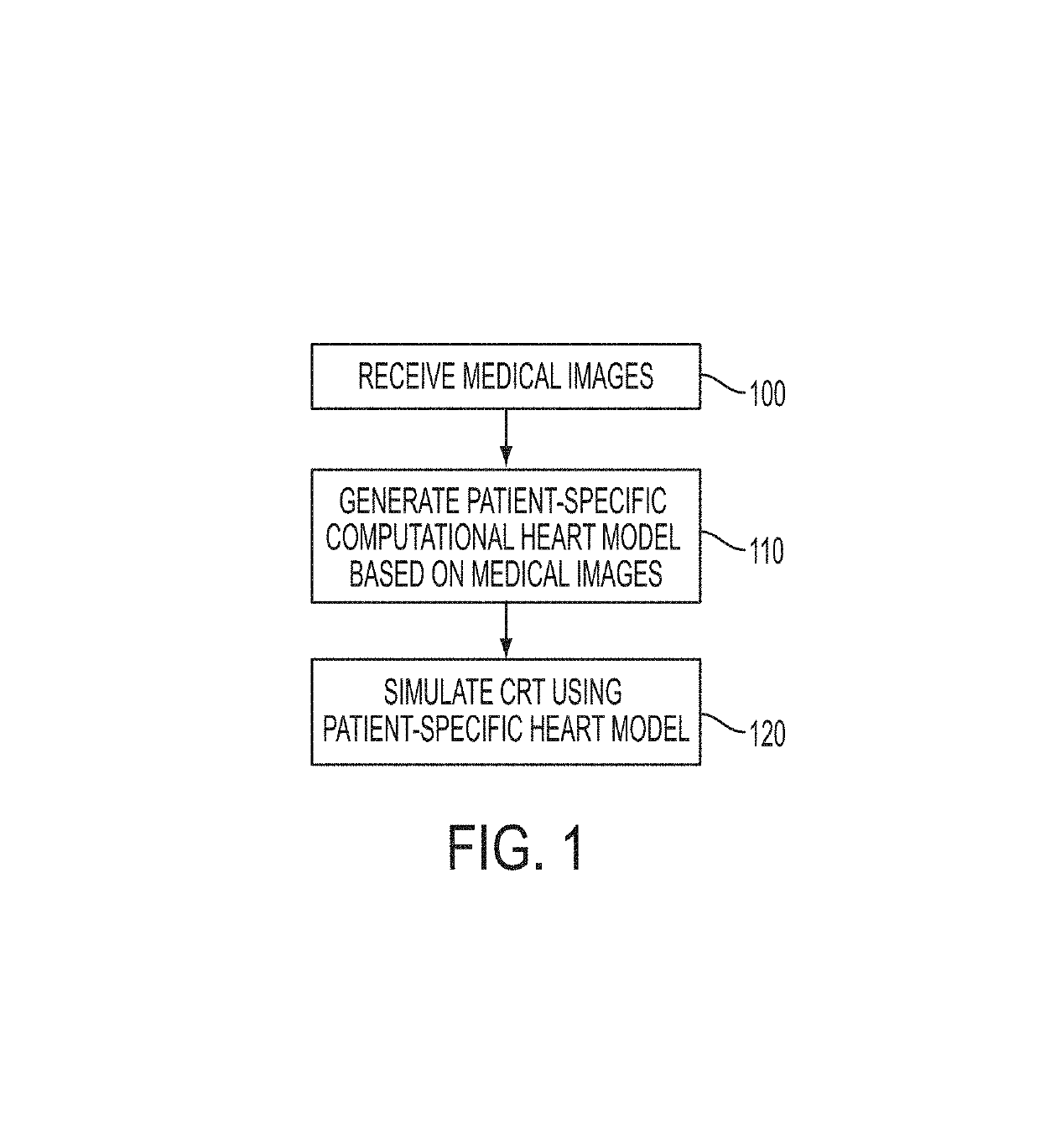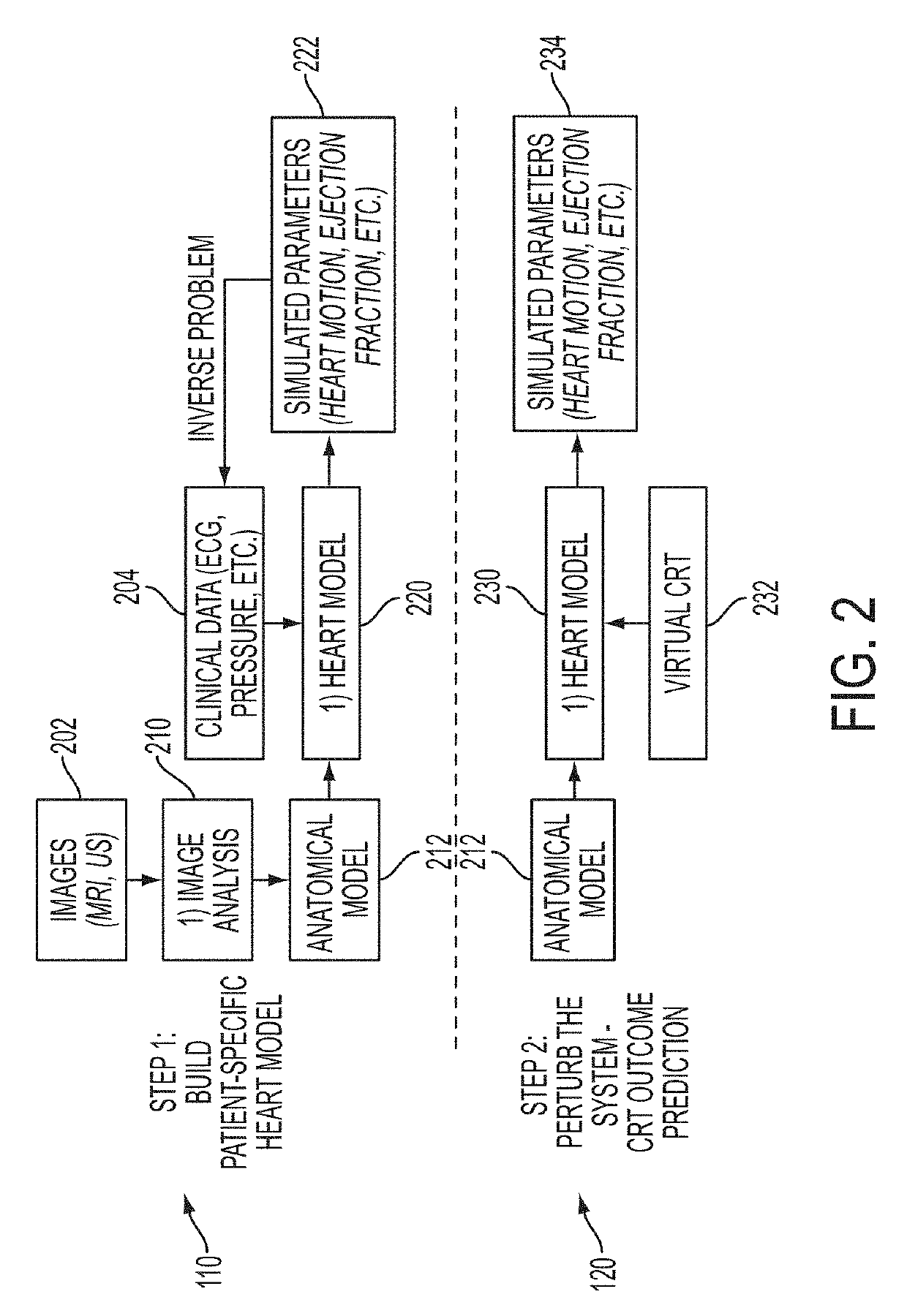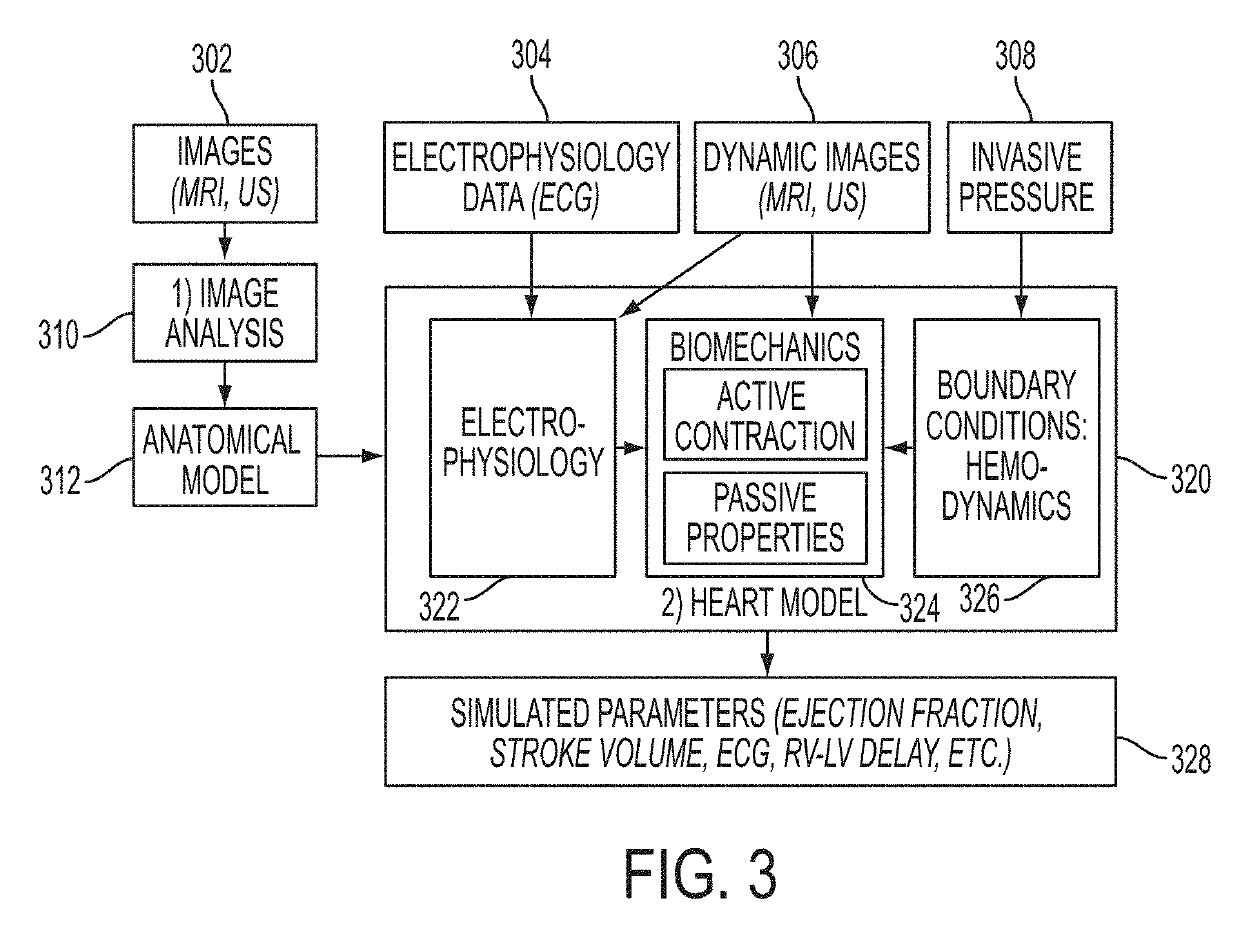Method and system for patient specific planning of cardiac therapies on preoperative clinical data and medical images
a technology of preoperative clinical data and medical images, applied in the field of patient-specific simulations for planning cardiac resynchronization therapy, can solve problems such as the reduction of the efficiency of the cardiac pump, and achieve the effect of increasing the number of suitable patients
- Summary
- Abstract
- Description
- Claims
- Application Information
AI Technical Summary
Benefits of technology
Problems solved by technology
Method used
Image
Examples
first embodiment
[0053]In the present invention, the passive properties of the myocardium are modeled using co-rotational elasticity. In this embodiment, the tissue passive properties are modeled using linear elasticity and Hooke's law. The elastic stress is directly related to the strain by the equation σ=C:ε, where σ is the stress tensor, C is a 4th order tensor of tissue constitutive law, and ε is the strain tensor computed from the reference position of the patient's anatomy. For transverse isotropic material like the myocardium, the matrix C is built in the local coordinate system of the fiber orientation according to the following inverse relationship:
[0054][ϵxxϵyvϵzx2ϵyz2ϵzx2ϵxy]=[000000000000000000000000][σxxσyyσzzσyzσxxσxy].(5)
Ex, Ey, Ez are the Young's moduli in each direction (X is along the fiber direction, Y and Z are defined accordingly), υij are the Poisson ratios for each direction, and Gxy is the shear modulus. Co-rotational linear tetrahedra are used to cope with the large defo...
second embodiment
[0055]In the present invention, a non-linear model is used to model the passive properties of the myocardium tissue. The present inventors recognized the need for a constitutive law that is accurate (i.e., it approximates well the behavior of the in-vivo myocardium tissue), numerically stable, and observable (i.e., its parameters can be estimated from clinical data. Exponential laws are usually more stable than their linear counterparts. Thus, exponential laws are given preference in the present embodiment, in particular the well known “Guccione law”, “Costa law”. For both models, the stress-strain energy is defined by an exponential relation:
W=½C(exp(DQ)−1), (6)
where C and D are parameters controlling the stiffness of the tissue and Q is an expression that describes the non-linearity of the model.
[0056]The model proposed by Guccione and colleagues in Guccione et al., “Mechanics of active contraction in cardiac muscle: Part II—Cylindrical models of the systolic left ventricle”, Jou...
PUM
 Login to View More
Login to View More Abstract
Description
Claims
Application Information
 Login to View More
Login to View More - R&D
- Intellectual Property
- Life Sciences
- Materials
- Tech Scout
- Unparalleled Data Quality
- Higher Quality Content
- 60% Fewer Hallucinations
Browse by: Latest US Patents, China's latest patents, Technical Efficacy Thesaurus, Application Domain, Technology Topic, Popular Technical Reports.
© 2025 PatSnap. All rights reserved.Legal|Privacy policy|Modern Slavery Act Transparency Statement|Sitemap|About US| Contact US: help@patsnap.com



